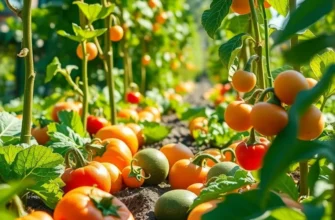Porridge, a humble yet versatile dish, transcends borders and showcases local ingredients and flavors across the globe. From creamy oat porridge in Scandinavia to the spicy rice porridge of Southeast Asia, countless cultures have their unique takes on this nourishing staple. Join us on a culinary adventure that celebrates the richness of diverse porridge traditions, inviting you to explore new tastes and cultural stories behind this beloved dish.
A Creamy Scandinavian Classic: Oat Porridge

In the heart of Scandinavian kitchens, oat porridge stands as a beloved staple. This creamy and comforting dish, known as “grød” in Denmark, “grøt” in Norway, and “gröt” in Sweden, is more than just a breakfast item—it is a cultural emblem of simplicity and nourishment. Rich in nutrients, oat porridge reflects the Scandinavian ethos of minimalism and a connection to the natural world.
The preparation of oat porridge may vary slightly across regions, yet its fundamental essence remains consistent. Typically, rolled oats are cooked in water or milk, slowly simmered until they reach a creamy consistency. Swedes might favor thick, hearty porridge, while Norwegians often prefer a lighter, more fluid version. Regardless of the method, the focus is on achieving a balance of flavors and textures, embodying culinary traditions passed down through generations.
This humble dish is often adorned with a variety of toppings, allowing for personal expression and seasonal influences. Fresh fruits like sliced apples, berries, or bananas offer a burst of natural sweetness and color. A sprinkle of nuts adds a satisfying crunch and boosts the nutritional value. A drizzle of honey or a dash of cinnamon can elevate the porridge, infusing it with warmth and richness.
Embracing the philosophy of mindful eating is key to fully appreciating this Scandinavian classic. Taking the time to enjoy each spoonful not only enhances the sensory experience but also aligns with mindful eating practices that promote a healthier relationship with food.
Creating this iconic dish at home is simple, requiring minimal ingredients and effort. For a basic recipe, combine one part oats with two parts liquid (water or milk) in a saucepan. Cook over medium heat, stirring occasionally, until the oats absorb the liquid and reach your desired consistency. Enhance the flavor by adding a pinch of salt, and adjust sweetness to taste with honey or sugar.
For those looking to explore variations, consider stirring in spices such as cardamom or nutmeg for a fragrant twist. Incorporating seasonal fruits not only adds vibrancy but also connects you to the changing seasons. In summer, ripe strawberries or blueberries can brighten your bowl, while in winter, sautéed pears or apples with a hint of cinnamon bring warmth to chilly mornings.
Whether you enjoy your porridge plain or with a bouquet of toppings, it remains a dish rooted in tradition and simplicity. Oat porridge, with its rich heritage and comforting nature, invites you to savor a piece of Scandinavia right in your kitchen, transforming every breakfast into a cultural journey.
A Savory Twist: Congee from Asia

In the heart of East Asia, congee emerges as a humble yet beloved staple. A rice porridge with a history as rich as its flavors, congee is cherished in countries like China, Japan, and Vietnam. This dish, steeped in cultural significance, transcends mere sustenance, offering comfort and community around every serving.
Congee, with its comforting warmth, is often served for breakfast, though its versatility makes it suitable for any meal of the day. In China, this dish is a staple in every household, known for its simplicity and adaptability. The Chinese approach to congee, or “zhou,” involves slow-cooking rice in an abundance of water until it reaches a creamy consistency. The toppings vary widely, from pickled mustard greens and pork floss to century eggs and scallions, each addition unfolding a story of regional variety and personal preference.
In Japan, congee is referred to as “okayu.” Unlike the often runny Chinese version, okayu is thicker, with whole grains of rice still discernible in the creamy liquid. It is typically enhanced with salted plums, known as umeboshi, or simmered fish. Not only a breakfast choice, okayu is commonly given to those who are unwell, embodying a nurturing element inherent in Japanese culinary traditions. This careful preparation highlights the country’s broader ethos of simplicity and mindfulness in eating, aspects that resonate with the practice of mindful eating.
Vietnam offers its own delectable variant: “cháo.” It’s often seasoned with ginger, fish sauce, and garnished with fresh herbs like cilantro and mint. Cháo serves as a culinary bridge between simplicity and depth, maintaining a light texture while delivering profound flavors. It plays a crucial role not only as a meal but as a means of gathering families, each person customizing their bowl to their taste.
Preparing congee from scratch is both an art and a practice in patience. Begin with a base of rice and plenty of water, allowing it to simmer slowly. The process requires occasional stirring to achieve its desired texture. As steam rises, so too does a sense of communal effort and anticipation. The act of cooking congee is as vital as the communal dining experience it heralds. In many Asian cultures, food is not simply consumed for nourishment but as part of a communal ritual, forging bonds and nurturing relationships.
Thus, the magic of congee lies not only in its flavors but in the warmth it brings to both the palate and spirit. Each bowl tells a story of ingredients and loved ones, framing congee as a timeless bearer of tradition and community. Exploring these variations across East Asia reveals congee’s profound role in bridging cultures and nourishing people, one bowl at a time.
Final words
Porridge is more than just a dish; it is a reflection of culture, community, and history. Each bowl tells a story, from the ingredients harvested from local lands to the traditions passed down through generations. By exploring these global porridge traditions, we embrace the creativity and resourcefulness found in kitchens around the world. Whether it’s savoring a warm bowl of creamy oats or a savory congee topped with vibrant flavors, we connect through a shared appreciation of nourishment and hospitality that transcends borders. Next time you enjoy a comforting bowl of porridge, remember you are partaking in a global tradition that has nourished countless souls.








